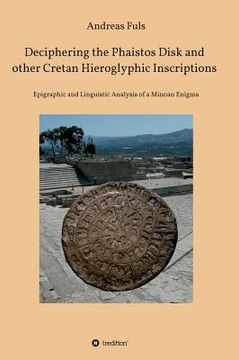Compartir
Deciphering the Phaistos Disk and other Cretan Hieroglyphic Inscriptions
Andreas Fuls
(Autor)
·
Tredition Gmbh
· Tapa Dura
Deciphering the Phaistos Disk and other Cretan Hieroglyphic Inscriptions - Fuls, Andreas
Sin Stock
Te enviaremos un correo cuando el libro vuelva a estar disponible
Reseña del libro "Deciphering the Phaistos Disk and other Cretan Hieroglyphic Inscriptions"
The Minoan culture on Crete existed around 2100-1420 BC leaving hundreds of inscriptions on seals, sealings and other artefacts. The most well-known inscription among them can be found on the Phaistos disk, a small clay disk with impressed signs on both sides. Deciphering it is one of the greatest challenges leading to better understanding the Minoan language and culture. First and foremost, the book offers a new general methodology in epigraphy for deciphering writing systems. Mathematical and statistical methods enable one to arrive at basic principles underlying the writing system and the root language. It allows one to begin a decipherment based on scientifically verified knowledge and to exclude false assumptions. While previous works on the Phaistos disk have either had to declare the impossibility of deciphering it or have suggested dubious interpretations based on preconceived assumptions, the present study aims to present a scientifically verifiable method for a step-by-step decipherment of the Phaistos disk. Now, by the end of the decipherment about 85% of the signs on the Phaistos disk can for the most part be read with a high degree of confidence. The discovered sound values and meanings of all the signs are then checked against other hieroglyphic inscriptions from Crete. It follows from the analysis that the Phaistos disk belongs to the writing system of both the Cretan and the Luwian hieroglyphs and that the texts are written in the Luwian language. The Phaistos disk and other Cretan-Luwian hieroglyphic inscriptions can therefore be considered to belong to a uniform linguistic area which extended from Crete to Western Anatolia during the Aegean Bronze Age.
- 0% (0)
- 0% (0)
- 0% (0)
- 0% (0)
- 0% (0)
Todos los libros de nuestro catálogo son Originales.
El libro está escrito en Inglés.
La encuadernación de esta edición es Tapa Dura.
✓ Producto agregado correctamente al carro, Ir a Pagar.

